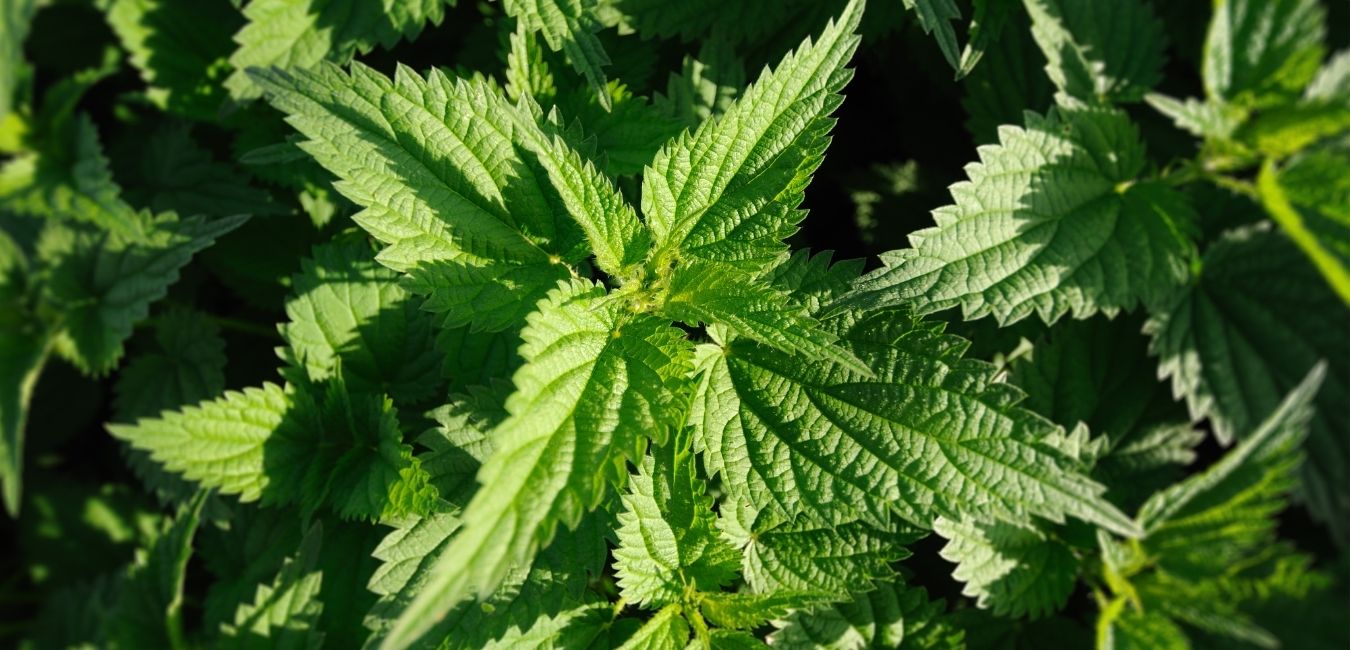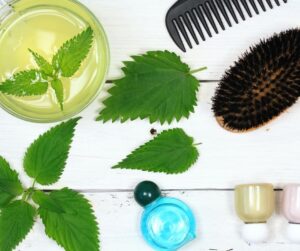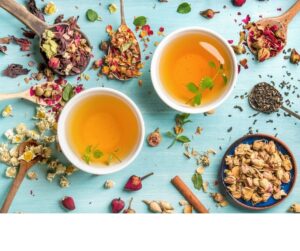Urtica dioica
What is stinging nettle and where is it found?
Stinging Nettle can be found in North America, Europe, South America, Asia, and Africa. Once you touch it, you know you have found it. It has a very distinguishable sting when brushed up against its hairs. Virtually the entire stinging nettle plant can be used medicinally or otherwise, however, each part is used differently.
The Sting
Most people try to avoid being stung by stinging nettle at all costs. However, traditionally in Germany, and perhaps other parts of the world, the sting is considered part of its medicine! People could be found jumping in a patch of stinging nettle to help alleviate arthritis or numbness. I have tried this myself with joint pain in my fingers and wrist. I am not advocating to intentionally sting yourself, if you try this, do this at your own discretion and risk. I do however think it is something that you can look into further if it sounds like something you would like to try!
Superfood – Better than a Multivitamin
Stinging nettle leaves are better than a multivitamin! So many of us are not getting adequate nutrients in our diet, and stinging nettle is a great way to remedy that.
Its nutritional content is through the roof! Stinging nettle is high in Vitamin A, C, K, as well as several B vitamins, calcium, iron, magnesium, phosphorus, and potassium. It is important to note that not only is nettle high in vitamins and minerals, it is high in antioxidants, contains protein and are low in fat!
How to Take Stinging Nettle for Vitamin and Mineral Content:

Eat It
Stinging Nettle straddles between food and medicine. In the past, wild greens were apart of our ancestors’ diets, and Stinging Nettle was absolutely on that list. I would not recommend picking a Stinging Nettle leaf and eating it. Just as it will sting your fingers, its tiny hairs will sting your mouth and continue to sting you on its way down.
Before eating stinging nettle’s, blanch them. Once blanched, its sting will be removed and you are free to enjoy your nutritious snack. Stinging nettle is great in pesto, added to salads, in soups, and much more.
Tea
Water is great at extracting vitamins and minerals from plants. However, if getting vitamins and minerals is our goal, we need to make our tea a little differently than we normally would. Here we would make a long infusion. A long infusion is made by pouring boiled water over the leaves. The leaves can be fresh or dried. Cover your infusion and let it sit for at least 4 hours. I like to make my long infusions before I go to bed and strain and drink them the next day. Once strained you can drink at room temperature, make iced tea, or heat it back up.
Vinegar
Vinegar is a fabulous menstruum to extract vitamins and minerals from plants. To make a vinegar put nettle leaves in a sterilized jar. Add vinegar until the leaves are completely covered. Let macerate for 4-6 weeks. Strain and enjoy your mineral bomb! You can take the vinegar by the spoonful or add it to salads or other food.
Seasonal Allergies

Stinging nettles are one of a few herbs that can be worked with to naturally quell seasonal allergy symptoms. When working with stinging nettle for allergies, consistency is key. In a perfect world you will start taking nettle about a month before your seasonal allergies begin and you will continue until the allergen is no longer a problem that year. Try to take daily.
Better late than never. If you forget to take nettle before your allergies start, that does not mean you shouldn’t try it. As soon as you think of it or feel your symptoms, try working with it every day to decrease your symptoms.
How to Take Stinging Nettle for Allergies
Long infusions
Pour boiled water over fresh or dried nettle leaves. Cover and let infuse for a minimum of 4 hours. Strain and drink. Even if you are only drinking this nourishing infusion for allergy relief, you will still get all of its mineral and nutritional benefits!
Capsules
You can either try freeze dried nettle capsules or capsules containing nettle powder.
Stinging Nettle Seeds – For Chronic Fatigue, Stress, Burnout, and More!
Stinging nettle seeds may be my favorite part of the plant. The seeds are something called adaptogens. Adaptogens are a category of herbs that help with chronic fatigue and low energy levels. Nettle seeds nourish and restore the kidneys and adrenal glands. The seeds are also high in vitamins, minerals, antioxidants, and protein. This trifecta is perfect for someone looking to increase their energy levels and help deal with stress.
Not only will nettle seeds increase energy levels when taken over time, but I can feel the effects right away! On days I put stinging nettle seeds on my food, I don’t even drink coffee. You can eat the seeds fresh or dried, but fresh seeds could be a little too intense for some people and some people report not being able to sleep well when they eat the fresh seeds.
When it comes to the seeds, a little goes a long way! A common recommended dose is 1-2 teaspoons per day. I usually use less than a teaspoon. I usually sprinkle nettle seeds in hummus, on a piece of toast, or in smoothies.
Sugar Cravings
Can stinging nettle help with sugar cravings? Absolutely! Check out an article I wrote, 8 Herbs and Spices to Naturally Stop Sugar Cravings to learn how to work with nettle and other herbs for sugar cravings and regulation.
Contraindications
Stinging nettle is quite drying, so if you are a person that already runs dry, (dry eyes, skin, throat, etc.) than add moistening herbs to the blend, or drink moistening herbs in other tea blends throughout the day. Some moistening herbs include: linden, violet, marshmallow, licorice. Do not use leaves once the plant has flowered or gone to seed.







